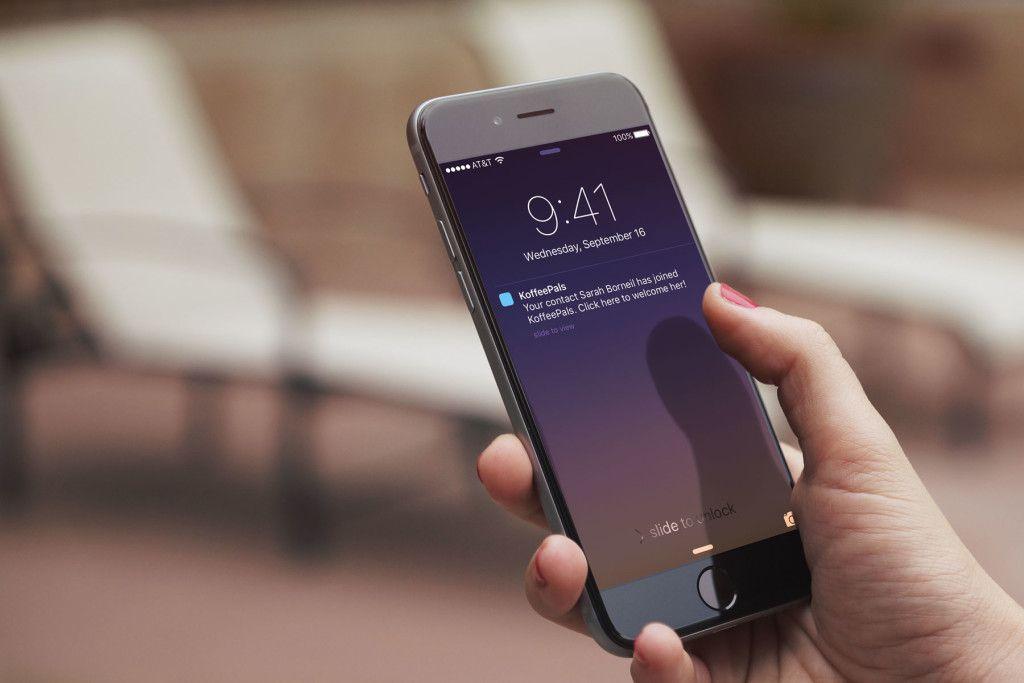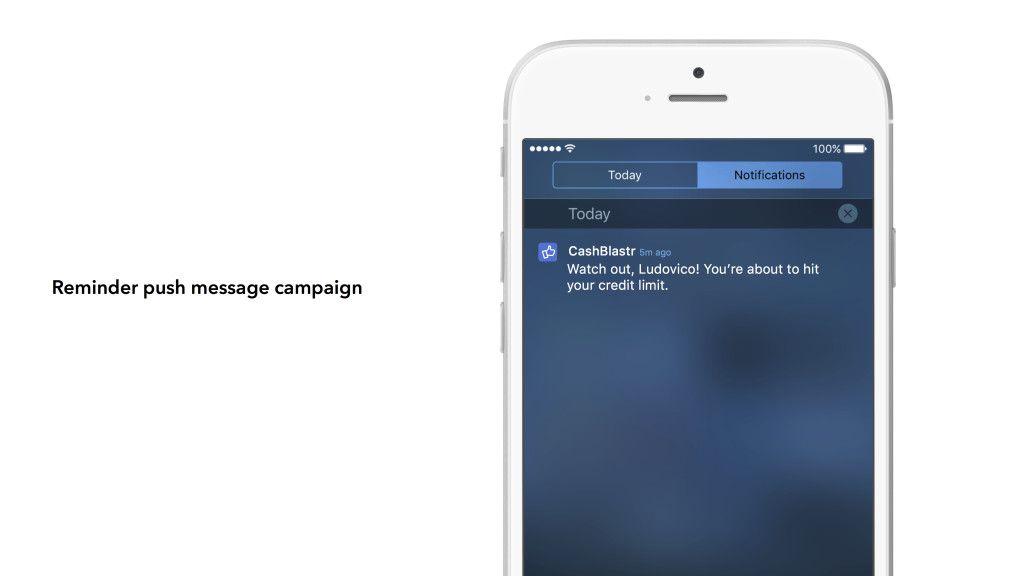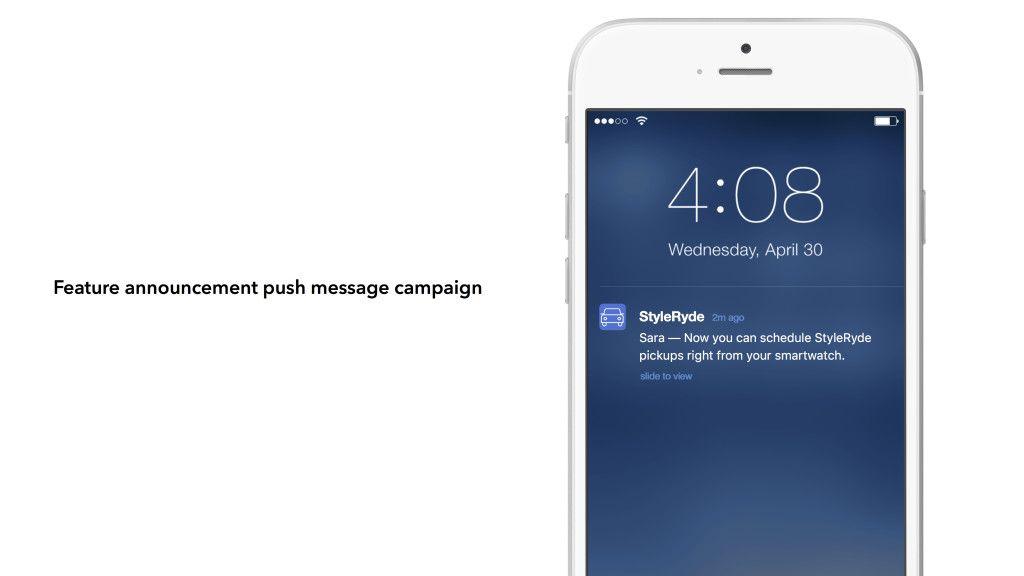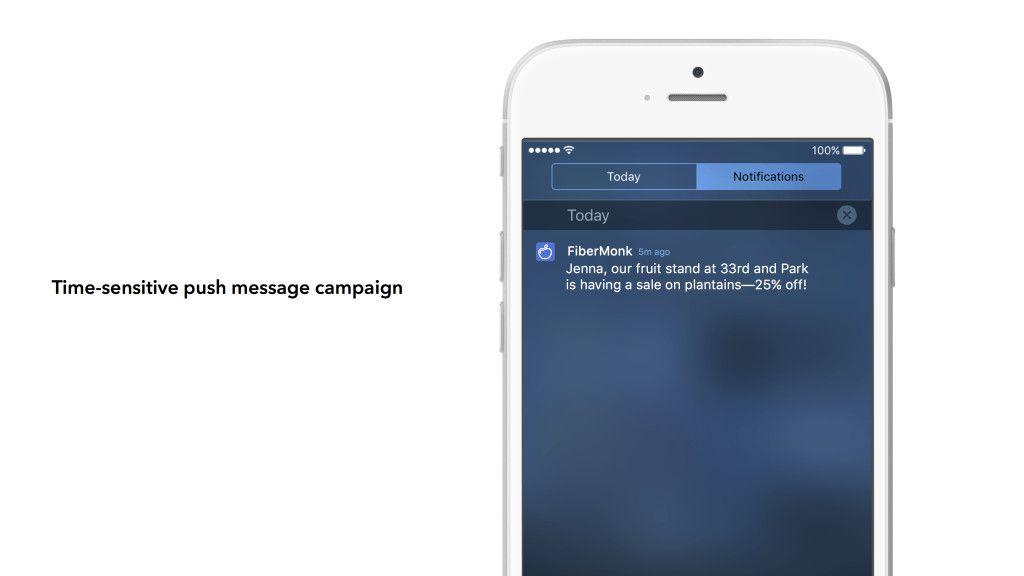9 Campaigns to Make the Most of Mobile Push Notifications
Published on February 26, 2016/Last edited on February 26, 2016/7 min read


Team Braze
Push notifications are on the verge of something big. This powerful mobile messaging channel has slowly evolved, allowing marketers to reach customers on wearable devices, desktop computers, and the mobile web. Push notifications for smart TVs and autos are probably not long off.
But even with all this innovation and new marketing possibilities, there are still a lot of brands who haven’t yet taken full advantage of the O.G. of push notifications—mobile push. Some send no mobile push at all, or send full-audience blasts and nothing more tailored. Others have mastered one or two push campaigns, but haven’t explored the full possibilities that this surprisingly versatile channel offers. That’s a big missed opportunity.

Wondering if there’s more that you could be doing? Check out these 9 push-centric campaigns and consider adding some (or all!) to your messaging mix.
1. Time-sensitive campaigns
Sometimes a brand has a message that they’ve just GOT to get to customers. You’re an entertainment news app and an A-list movie star just got arrested. You’re an ecommerce app offering a one-time-only deal that ends today. Whatever vertical you’re in, mobile push is a great way to get the word out. Push messages are attention-getting by nature: sliding into view no matter what a customer is doing, allowing you to reach people who aren’t currently using your app. Just make sure that you set the relevancy and immediacy bar for this type of campaigns relatively high—there’s little more frustrating for customers than receiving a barrage of “urgent,” “time-sensitive” messages that are actually anything but.
2. Reminder campaigns

Successful apps add value. Customers use them because they provide something that’s useful, meaningful, or maybe just fun. A good way to demonstrate that value is through the thoughtful use of push notifications to power reminder messages. Did a user save an upcoming gallery opening in your events app? Send them a push an hour before the opening to remind them that it’s happening. Is a customer within $100 of their credit card limit? Let them know before they go over. As with time-sensitive campaigns, this sort of push message only makes sense if you’re confident that recipients will find it valuable—after all, a reminder about something you don’t care about is annoying, not helpful. So make sure you’re collecting enough data on your customers to target messages effectively.
3. Promotional campaigns
This sort of campaign is often associated with ecommerce, but it can be an asset to any app that’s looking to let customers know about a discount, special offer, or other promotion–perhaps a free trial period on a premium service within the app. Because push messages can reach customers beyond the app, they’re a great way to let customers who aren’t currently using your app know about your promotion. However, resist the urge to rely exclusively on push to drive your promotional outreach—push notifications are easy to overdo and 78% of customers will opt out of push or uninstall an app if they get messages they’re unhappy with. For the best results, take advantage of push as part of a coordinated multichannel marketing campaign.
4. Onboarding campaigns
A customer who leaves their first session with a clear understanding of the value that your app can provide and how to obtain that value is a customer who is primed to engage seriously with your brand. A well-designed onboarding process can do a lot to help them get there, but only if customers actually complete it. Push notifications are an effective way to reach new customers and encourage them to return to the app and finish onboarding, but you’ll see even better results if you use them as part of a multi-channel approach. Onboarding campaigns using push alone increase two-month retention by 71% over the control group, but adding a second channel boosts retention rates by 130%.
5. Re-engagement campaigns
When a customer is engaging regularly with your brand and opening your app consistently, it makes sense to use less-intrusive channels like in-app messages and News Feed Cards to communicate with them. But for customers who have started to drift away, you need a messaging channel that has the power to reach them when they’re not using your app. That doesn’t have to be push notifications (email is also an effective channel for this kind of outreach), but it should probably be part of your re-engagement mix. Not every lapsing customer will have opted-in for push, of course, but there will be plenty for whom push is the best channel to reach them—whether because you don’t have their email address or because they prefer to be reached via that channel. That makes a multichannel strategy using push a good bet here.
6. Feature announcement campaigns

Over time, your app is going to change. New features, new capabilities, new design schemes. And that’s a good thing—you don’t want people to open your app and wonder whether it’s ever been updated. But you also don’t want to leave your less-engaged customers behind. When a customer returns to an app that’s fundamentally changed in their absence and they aren’t given guidance on how to use the new version, that increases the odds that they uninstall. Push messages can be an effective way to keep them abreast of major changes, even if they’re not checking your app often. However, it’s important to use some discretion when deciding what features to highlight. If you start sending less-active customers a push every time you update your app, you may well drive them away completely. Think about whether a given alteration significantly changes the user experience and, if so, whether push is the best channel to use to highlight the update—for more complex changes, it may make more sense to use email (which supports rich content and in-depth copy) to get your point across.
7. New content campaigns
Maybe your brand’s digital magazine has a new issue, or your music streaming app just got their hands on a new Kanye track (or seven), and you want to let your users know. Push notifications will get the word out effectively, but tread carefully. Some recipients will be annoyed if interesting content comes out and they’re not told about it until they visit the app, and others will be irritated to receive a push just because you happen to have new content. Use your customers’ behavioral data to target these campaigns to people who are likely to engage with the content you’re promoting. Even better, you could create a permissions center where customers can choose whether or not they want to receive this sort of campaign, reducing future uninstalls and making it more likely that recipients engage with the messages you send.
8. Activity messaging campaigns
If your app has a social component, allowing users to add friends and see what they’re up to (think Facebook, SoundCloud, or Untappd), then activity messaging can be a great way to encourage consistent engagement and build stronger retention over the long term. By taking advantage of your push notification capabilities to let users know when a friend has joined the app, published a post, or carried out other notable actions, you’re giving your audience compelling reasons to return to your app on a regular basis and engage with your brand. That being said, not every customer is going to want to receive a push just because their Aunt Susan liked a picture they posted. Pay attention to push opt-outs and app uninstalls and consider limiting the activities that trigger push notifications, creating a permissions center, or setting a push frequency cap if these negative KPIs spike.
9. Location-based campaigns

A customer walks by one of your brick and mortar locations and receives a push notification letting them know about a special in-store discount. A user gets a push letting them know about an EDM concert that’s been added to a venue in their town. These sorts of location-driven messaging campaigns can encourage deeper engagement and monetization, but they can also irritate customers if used thoughtlessly. Make sure that these messages are relevant and valuable by personalizing them for each customer based on their behavior and interests, not just their current physical location, and consider using frequency capping to set a ceiling on the number of push notifications that your customers receive. By using some discretion in putting these campaigns together, you can avoid overwhelming customers and help keep them open to these sorts of campaigns in the future.
Releated Content
View the Blog
The new inbox reality: How iOS changes are reshaping email marketing

Aparna Prasad

Experience optimization: Turning data insights into better journeys

Team Braze

December 2025 Bonfire Marketer of the Month: Jagex’s Emma Oliver
